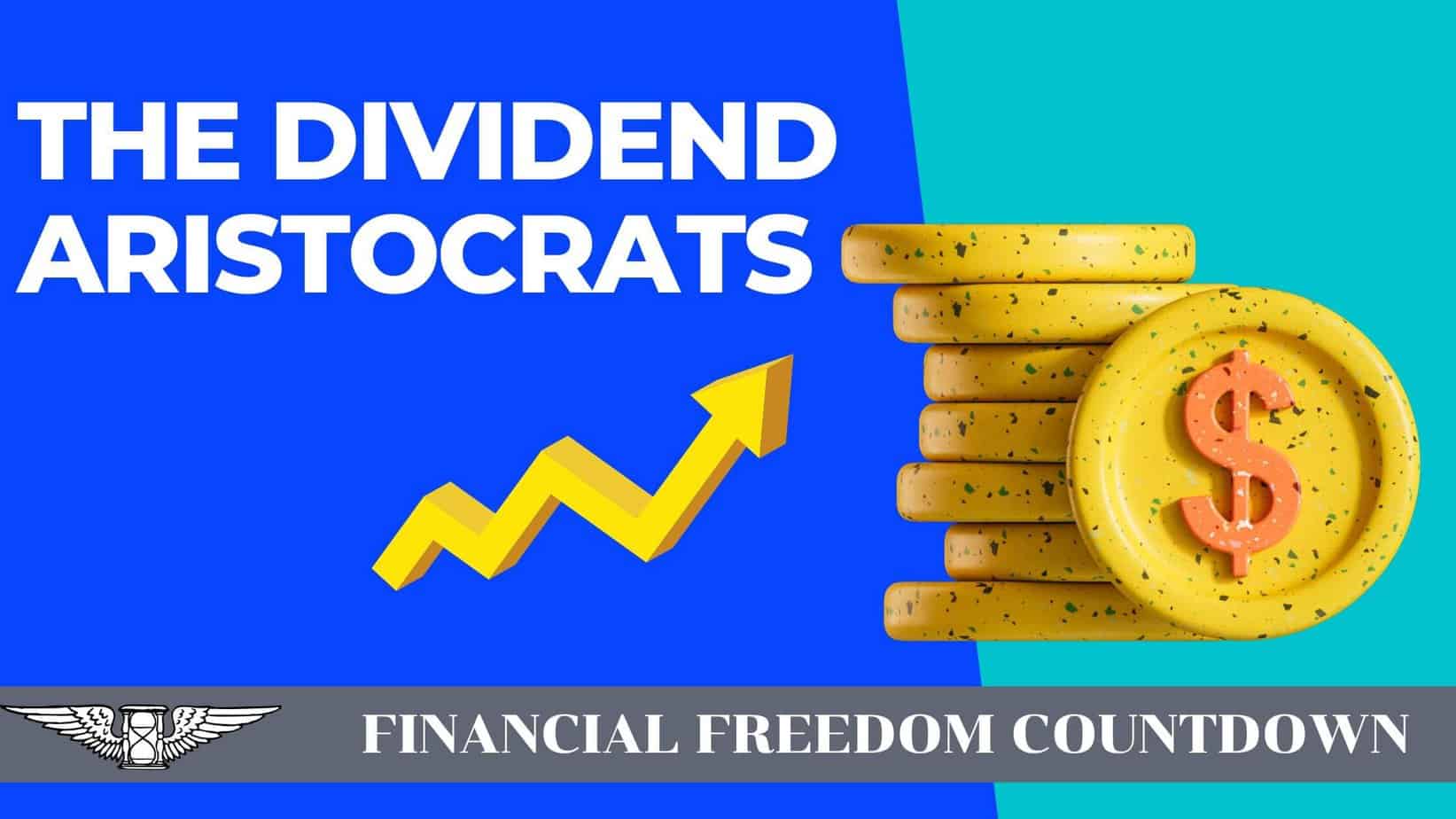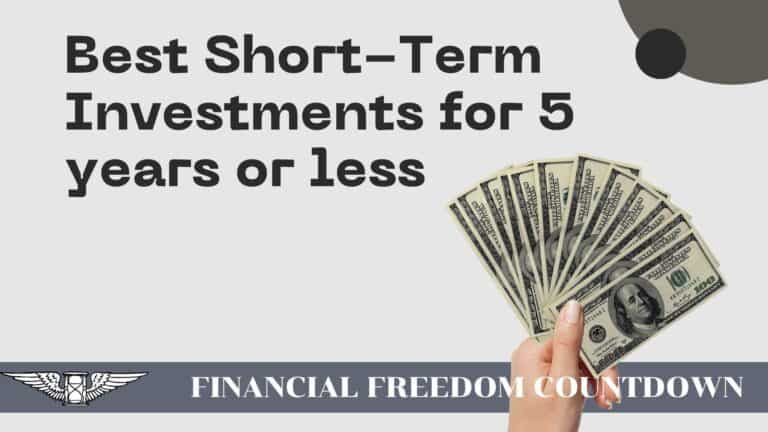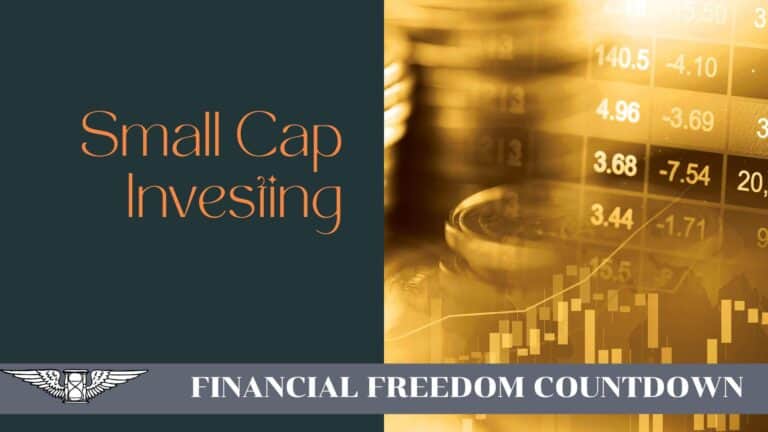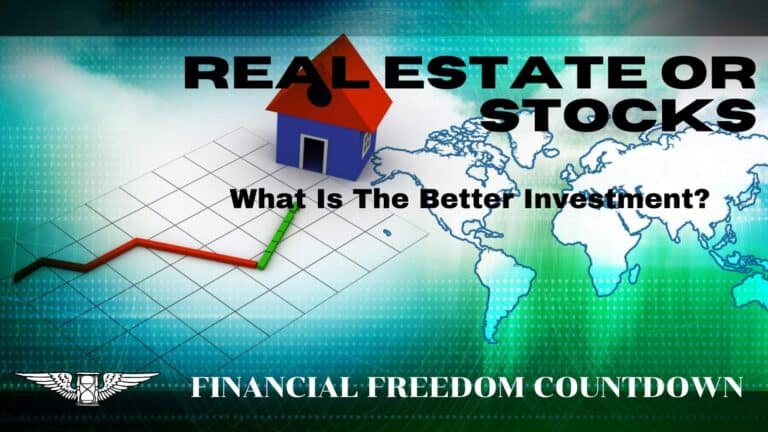The Dividend Aristocrats: Should They Be Part of Your Portfolio?

Investing can be confusing and risky, but you want to ensure your money works as hard for you as possible. Over time, learning how to invest has proven to be one of the smartest and safest ways to grow your money. However, many people are hesitant to invest because it can seem daunting.
Dividend stocks are an excellent way for beginners to invest in the stock market. That said, it isn’t easy to know which dividend-paying stocks to add to the portfolio. Some investors look for the highest-yielding stocks, but that can be misleading.
And other investors pick a stock they like because it pays a dividend. There are better ways to find the best individual stocks that pay dividends. That is where we can look at the list of Dividend Aristocrat stocks.
Today, we will discuss what makes the Dividend Aristocrats unique and why you should consider investing in them!
What Are Dividend Aristocrats
Dividend Aristocrats are a select group of companies that are part of the S&P 500 and have increased their dividends for 25 consecutive years or more.
A total of 65 companies are listed on the Dividend Aristocrat list, which not only offers high yields but also comes with a lot of stability.
Some investors further narrow the Dividend Aristocrats list to meet liquidity requirements of at least 5 million shares traded daily and have a minimum market capitalization of at least $3 billion.
The Dividend Aristocrat index does not stay static. It is updated each January. Some companies are dropped off the Dividend Aristocrat list, and some are added. In 2009 and 2010, 19 companies were dropped from the index because of the recession; most were banks or financial institutions.
In 2022, AT&T was dropped from the prestigious Dividends Aristocrat list because they had two consecutive quarters without raising their dividend and announced plans to reduce their dividend.
Index funds are a basket of stocks that trade based on a particular index. The dividend aristocrats are picked only from the S&P 500, which adds a quality check on the companies since investing in the S&P 500 has been a winning strategy over several decades.
Warren Buffett’s quote advocated the merits of investing in a low-cost S&P 500 fund in a 2016 Berkshire Hathaway shareholder letter. Buffett said, “Over the years, I’ve often been asked for investment advice, and in the process of answering, I’ve learned a good deal about human behavior. My standard recommendation has been a low-cost S&P 500 fund.”
Why Should Investors Buy Dividend Stocks
Buying dividend-paying equities is an excellent way to continually build a more extensive portfolio. Dividend stocks are one of the few investments providing a monthly income that are not fixed-income investments.
An investor can use automatic dividend reinvestment programs known as DRIPs to gain more and more company shares.
Investors can buy more company shares with each dividend payment and continually build a more significant position. The more shares an investor owns, the higher the dividend payment will become each quarter and the higher the cash flows.
For example, if an investor invested $10,000 into an S&P 500 Index fund in 1970, by the end of 2019, they would have more than $350,000, assuming they did not reinvest the dividends. The price increase would come from the price growth of the S&P 500 Index.
If the investor had reinvested the dividends into the S&P 500 Index fund, they would have more than $1.6 million at the end of the 50 years. This example shows the power of reinvesting dividends.
Not all investors want to reinvest the dividends. They are income investors who will take the dividends and use the money to supplement their income or for other purposes like investing in real estate.
What Is a Dividend Yield
A dividend is an amount of money that a company will pay to shareholders when they own the stocks. Not all companies pay a dividend. Many small companies and growth companies do not pay a dividend. Instead, growth companies put all of their profits back into the company. Companies that pay shareholders a dividend are usually older and more established.
A dividend is a portion of the company’s profits and is paid to holders of the company’s stock each quarter. If an investor owns 100 shares of a company that pays a dividend of $2 per year, the investor will get $200 per year or $50 per quarter.
An investor will also look at the yield. The yield is the percentage that represents the dividend payment. Looking at the yield is a better way to evaluate dividend-paying equities than just looking at the dividend payment itself. The yield provides a more accurate comparison among the equities that pay dividends.
To determine the yield, divide the annual dividend by the current stock price. A $100 stock that pays $4 per share per year has a dividend yield of 4% ($4 dividend / $100 per share price = 4%).
A $10 stock that pays $0.40 per share annually also has a dividend yield of 4%.
How Dividend Yields Can Be Misleading
The stock price and the dividend yield are inversely related. When one goes up, the other goes down. That is why it is not advisable to look at a stock’s dividend yield and pick the equity with the highest yield.
If the $100 stock that is currently paying a yield of 4% drops in price to $50, the dividend yield would then be 8%. At first, glance, that 8% dividend yield looks better than a 4% yield.
Before investing in this stock, an investor would look at the past price action of this stock and see the drop to $50. That could be a red flag, and you have to find out why the price dropped to $50. Is there something wrong with the company, or did the entire stock market drop that much, or maybe they had a two-for-one stock split?
If something is wrong with the company, like a negative earnings report or something like that, the company could have a problem maintaining that 8% yield and cut the dividend payment shortly. That is how dividend yields can be misleading. Don’t just choose individual stocks because they pay a higher dividend yield.
Higher yields should not scare away an investor. But one should investigate further a higher than average yield for the company’s sector. The S&P 500 has 11 different sectors, each with an average yield. Looking at the S&P 500 single sector yield averages is an excellent way to see which companies have a higher than average yield.
Another way a stock’s yield could go higher would be if the company raised its dividend, which is something all income investors love to see. The $100 stock with a 4% yield would see its yield increase to 4.4% if it raised its annual dividend to $4.40 per share annually.
One should investigate any individual stock paying a dividend yield above 4% for a reason for the high yield.
An exception to this is real estate investment trusts (REITs). These companies usually pay a considerably higher yield, as high as 10% or more.
Why Invest in the Dividend Aristocrats Index
The Dividends Aristocrats Index is all of the Aristocrat stocks. Aristocrat stocks have the following benefits over the majority of equities on various Dow Jones indices:
- These large and well-established companies are usually leaders in their industry.
- They are a reliable source of income and dividends with no negative surprises.
- They are less volatile than the overall market, which means they fall less during a bear market and rise less during a bull market.
Investing in the Dividend Aristocrats list is excellent for reliable dividends and dividend growth, not capital appreciation growth. Capital appreciation is always incredible, but the main goal is consistent dividend growth and capital preservation during market downturns.
As of February 2022, the consumer staples sector has the largest equities allocation in the Dividend Aristocrat index at 21.5%. The industrials sector has an allocation of 19%, followed by financials at 13%, materials at 12.2%, and healthcare at 11.5%.
Since 2013, the ProShares S&P 500 Dividend Aristocrats Index has gained 145.1%, while the SPDR S&P 500 ETF Trust Total Return has gained 163.7%.
Investors who want more gain can invest in growth companies or smaller cap equities. But they will invest in the Dividend Aristocrats stocks for reliable, lower risk, dividend-paying equities.
Pros of Investing in Dividend Aristocrat Stocks
A dividend is a passive income, meaning you don’t have to do anything and earn income from previous work. In this case, the previous work is investing. John D. Rockefeller is quoted as saying, “Do you know the only thing that gives me pleasure? It’s to see my dividends coming in.”
While you’re sleeping, you are making money from dividends. Each quarter you will see this passive income show up in your investment account. That is the beauty of a dividend. Investors enjoy this form of payment from their dividend payout every quarter as long as they own the equities that pay a dividend.
A stock is an Aristocrat doesn’t mean it is an outstanding stock to buy today. There are cycles in the economy that cause some sectors to do better than others. During an inflationary cycle in the economy, consumers are cutting back on specific sectors, like the consumer discretionary sector.
But other sectors like non-discretionary or consumer staples and healthcare can do quite well. Energy is another sector to look at. These are sectors with companies that people have to use, whether in a recession or not.
To choose individual stocks, investors still have to do some research. An investor will look at the PE ratio, the yield, adjusted earnings, eps growth, total sales, the company’s cash flows, and the rest of the company’s fundamentals.
Aristocrat equities usually do better than other equities do during bear markets and recessions. Most likely, these stocks will drop in price like all other equities, but they will still be paying a dividend every quarter. If a stock drops a little, an investor could still come out ahead because the dividends would more than compensate for the stock price drop.
Cons of Investing in Dividend Aristocrat Stocks
1) Dividend payments are taxed at a higher rate compared to capital gains Since dividends are not tax-efficient, it is best to follow asset location principles as part of your tax-saving strategy.
2) Companies returning shareholder money in dividends generally are forsaking growth opportunities.
The 12 Top Dividend Aristocrats by Yield
The list of the best Dividend Aristocrat stocks can change. You can find lists sorted in several ways, like the most likely to do well investing during a recession, the highest yield, or the best value equities with a price-to-earnings ratio under 20.
Here are the best Aristocrat equities listed by yield as of early August 2022:
- IBM (IBM) with a yield of 5%
- Walgreens Boots Alliance (WBA) – 4.89%
- VF Corp. (VFC) owns the North Face brand – 4.47%
- Franklin Resources (BEN) – 4.21%
- 3M (MMM) – 4.20%
- Federal Reality Investment Trust (FRT) – 4.09%
- Realty Income Corp. (O) – 4.06%
- AbbVie (ABBV) – 4.01%
- T. Rowe Price (TROW) – 3.87%
- Amcor (AMCR) – 3.77%
- Exxon Mobile (XOM) – 3.74%
- Chevron (CVX) – 3.56%
The 12 Top Dividend Aristocrats at Value Prices
The stock market has not had a good 2022 so far. But the market drop has created great discounts in some Aristocrat companies.
Here are the 12 top Aristocrat stocks with their yields that you can buy at a discount as of August 19, 2022:
- West Pharmaceutical Services (WST) with a yield of 0.22%
- S&P Global (SPGI) – 0.88%
- Sherwin-Williams (SHW) – 0.95%
- Dover (DOV) – 1.44%
- Pentair (PNR) – 1.67%
- A.O. Smith (AOS) – 1.75%
- PPG Industries (PPG) – 1.86%
- Lowe’s (LOW) – 1.94%
- Stanley Black & Decker (SWK) – 3.12%
- Target (TGT) – 2.50%
- T. Rowe Price Group – 3.64%
- V.F. Corp (VFC) – 4.29%
Dividend Aristocrats EFT
It takes a lot of knowledge and research to pick individual stocks to invest in. And shares of many Dividend Aristocrat stocks cost well over $100 per share. Sometimes it is easier to buy an Aristocrats ETF (exchange-traded fund).
The one true Dividend Aristocrats ETF is the Proshares S&P 500 Dividend Aristocrats ETF (NOBL). Owning the Proshares S&P 500 Dividend Aristocrats ETF exposes an investor to the entire Dividend Aristocrats list. This ETF tracks the companies’ performance in the Dividend Aristocrats index.
Another ETF, an investor, might invest in is the SPDR S&P Dividend ETF (SDY). This exchange-traded fund tracks the 50 highest yielding equities in the Dividend Aristocrats index. If an investor wants a little more yield, this ETF is worth looking at.
Dividend Kings
Dividend Kings is another equities index that has increased its dividends for at least 50 years. Not all Dividend Aristocrats companies will show up in the Dividend Kings index, and not all of the companies on the Dividend Kings index will show up in the Dividend Aristocrats index.
Not all companies on the Dividend Aristocrats index have been around for 50 years. But to qualify for the Dividend Kings, the company would have to exist for at least 50 years and increase its dividends each of those 50 years.
There are currently 44 companies that qualified for the Dividend Kings index in 2022, with American States Water (ASW) increasing its dividends for 67 consecutive years.
There are no exchange-traded funds that an investor can buy to track the performance of the Dividend Kings. If you buy the Proshares S&P 500 Dividend Aristocrats ETF, you will still own most of the companies on the Dividend Kings index.
How To Buy Dividend Aristocrats
You can pick individual stocks from the list of dividend aristocrats based on additional filtering criteria of sectors, PE, yield, etc. Or you could invest in Proshares S&P 500 Dividend Aristocrats ETF (NOBL).
In either case, staying diversified and investing in a broad range of companies is best.
I use M1Finance, a no-fee platform that automates everything from investing to rebalancing for free to optimize the benefits of dollar cost averaging.
Read my M1 Finance Review to see why I prefer it over the larger brokerages such as Vanguard, Fidelity, and Schwab. Use a set-it and forget-it approach.
Summary on Dividend Aristocrats
Investing in equities that pay dividends is a sound investing strategy. Investing in equities that have had dividend increases for at least the past 25 is an even better-investing strategy. Companies with consistently rising dividends for years will show an investor that the company is well run and cares about its investors.
When an income investor looks for a stock that pays a dividend, they are interested in a decent yield and a company with consistently rising dividends. A high yield doesn’t mean it is an excellent investment because the high yield might not be sustainable.
There is an inverse relationship between the stock price and the yield. The dividend yield will increase when the price falls.
So, a high dividend could mean the price has dropped recently and should be thoroughly researched. If there is a problem with the company, companies tend to lower the dividend payment.
Not all companies in the stock market are dividend stocks. Companies that pay dividends are usually older and more established with lower volatility. Younger growth companies tend to put all their money back into the company to continue its growth.
Income investors will look at the Dividend Aristocrats list to find good dividend-paying companies. The companies that are on the Dividend Aristocrats list have to meet the following criteria to be included on the Dividend Aristocrats list:
- Have had at least 25 years of dividend growth
- Has to be listed on the S&P 500 Index
The companies on the Dividends Aristocrats list include all stock market sectors. During rising interest rates or inflation, consumer staples, health care, and energy are the best sectors. An investor can research the best individual stocks on the dividends aristocrats for just the companies in the industries they want to invest in.
During rising interest rates, investors might look to move their money into safe haven investments. Safe havens are considered bonds and older, established, dividend-paying equities.
An investor can invest in an exchange-traded fund, like the Proshares S&P 500 Dividend Aristocrats ETF, to cover the broader market of the dividends aristocrats list.
Another list of stocks that have paid a dividend consistently for years is called the Dividend King list. To be on the Dividend King list, a company has had to raise its dividends for 50 consecutive years or longer.
If you’re looking for a current dividend yield above 4%, IBM is the best company on either of these lists. IBM has had 27 consecutive years of dividend growth. If you’re more of a value investor, you can find Aristocrat stocks selling at a discount during the summer of 2022 because of the down market this year.
The European Dividend Aristocrat list is for an investor interested in European stocks. Consistently rising dividends are not as common in Europe as in the United States. For a European company to get on this list, it must have had stable or rising dividends for at least 10 consecutive years.
If you want better yields than you will find at a bank or certificates of deposit, these lists are a great place to look. Although stocks cannot be classified as safe investments, they are safer than many other stocks. If the markets go down or enter a bear market, shareholders hopefully might still get their quarterly dividend checks.
If you have trouble selecting the right equities from the Dividend Aristocrats list, you should ask for investment advice from your brokerage firm.

John Dealbreuin came from a third world country to the US with only $1,000 not knowing anyone; guided by an immigrant dream. In 12 years, he achieved his retirement number.
He started Financial Freedom Countdown to help everyone think differently about their financial challenges and live their best lives. John resides in the San Francisco Bay Area enjoying nature trails and weight training.
Here are his recommended tools
Personal Capital: This is a free tool John uses to track his net worth on a regular basis and as a retirement planner. It also alerts him wrt hidden fees and has a budget tracker included.
Platforms like Yieldstreet provide investment options in art, legal, real estate, structured notes, venture capital, etc. They also have fixed-income portfolios spread across multiple asset classes with a single investment with low minimums of $10,000.





